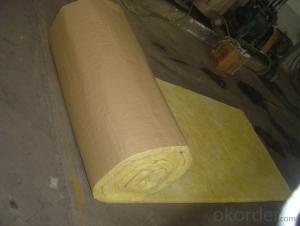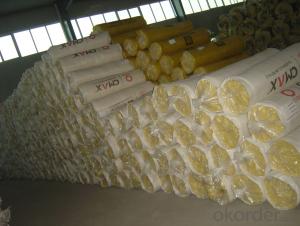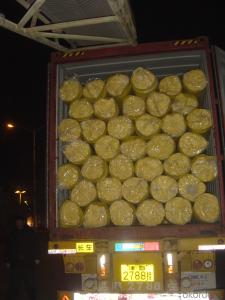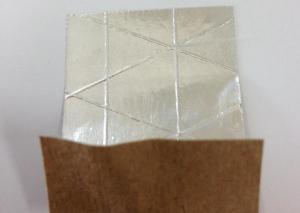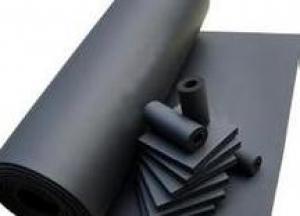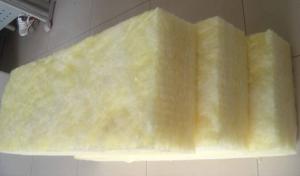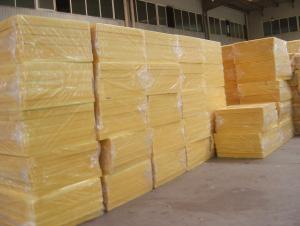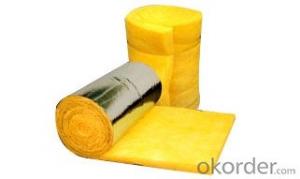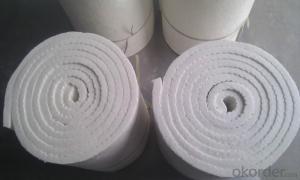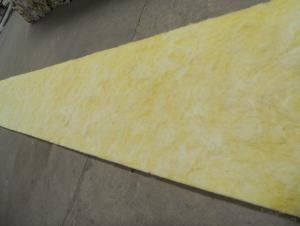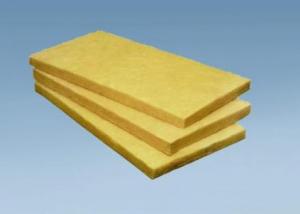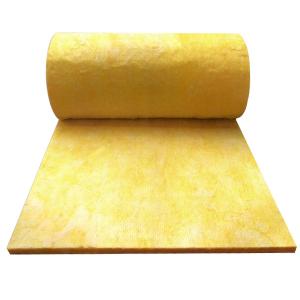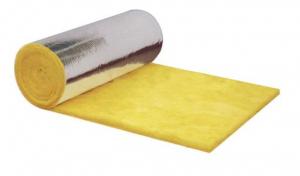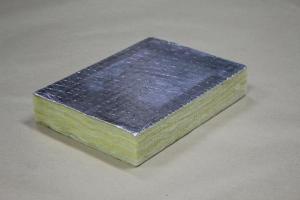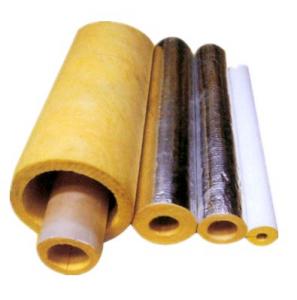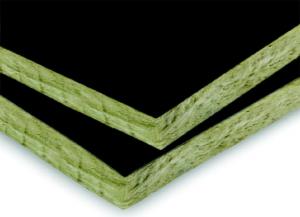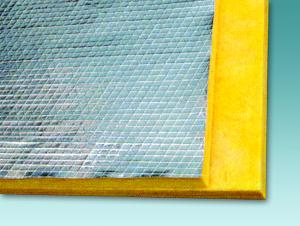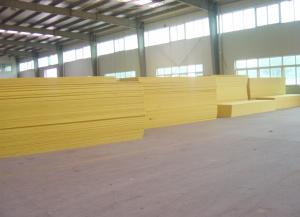Insulation Glass Wool Blanket Kraft Paper Faced For Drywall
- Loading Port:
- China Main Port
- Payment Terms:
- TT OR LC
- Min Order Qty:
- -
- Supply Capability:
- -
OKorder Service Pledge
OKorder Financial Service
You Might Also Like
Production Description
Glass wool blanket is in flexible form for ease of installation over large areas. Both products are available to order with a wide range of density and thickness, and with various types of facing applied.
Standard Size
Item | Unit | Index |
Density | Kg/m3 | 10 - 48 |
Thickness | mm | 25-150 |
Width | mm | 1200 |
Length | mm | 5000-30000 |
Remark:
Other sizes available upon request Facing materials can be applied upon request
Technical Data
Item | Unit | Index |
Average Fiber Diameter | μm | 5-7 |
Water Content | % | ≤1 |
Grade of Combustibility |
| Non-Combustible Grade A |
Thermal Conductivity ( 25℃) | W/mK | 0.038- 0.045 |
Reshrinking Temp | ℃ | ≥250 |
Hydrophobic | % | ≥98 |
Moisture Rate | % | ≤5 |
Noise Resistant Coefficient (NRC) |
| 0.75 |
Slag Inclusion Content | % | ≤0.3 |
Application
Glass Wool are widely used in public, commercial and residential buildings as well as industrial plants, for applications such as roofing, external wall, partition wall and floating floor to provide fire protection, thermal insulation, acoustic control and condensation control.
- Q:What are the differences between glass wool and rock wool in terms of thermal insulation?
- If the temperature is higher than 300 degrees, the rock wool boards are better. The operation life of glass wool at high temperature is short, and the price of which is higher than that of rock wool. Galvanized board can be used as protective layer for its long operation life but it rusts easily and is not so beautiful. The aluminium plate has a short operation life and it damages and deforms easily.
- Q:What are the differences among glass wool, rock wool and mineral wool?
- So performances are the same. Though materials are different, they are the same as glass wool. They are blown into wool after being melted. Rocks and slags are raw materials, and they will mix together in the same proportion, and finally become glass.
- Q:how to choose external wall insulation materials for glass wool?
- Extrusion plate: Better physical property, small heat-transfer coefficient, low cost, suitable for buildings that requires not much exterior decoration; phenolic foam board: it can reach A level fireproof, low heat transfer coefficient, high cost. it becomes powders after hand pinching. It has poor adhesion; modified polyurethane board: It can reach A level fireproofing, low heat transfer coefficient, high cost. It can be used with various decorative materials.
- Q:How about the thermal insulation performance of glass wool?
- The features of glass wool mainly include light weight, easy installation, high thermal insulation efficiency, low hygroscopicity, and strong vibration resistance. Fibers of raw materials of glass wool are relatively even in terms of length and thickness, they are closely intertwined during processing procedures. The interwoven structure and its heat conduction are at a right angle, which can effectively retain heat. It operates simply during installation and use, simple common tools are needed to cut. Meanwhile, there will not be disjointed or stretched in use. There are a lot of tiny air voids in the glass wool, thus the physical property is also relatively stable. It is commonly used in various heating, ventilation, tank, air-conditioning adjustment, the performance of which is significant. Of course, the glass wool can also be customized, we can make glass wool with special specification according to your requirements. Using glass wool as thermal insulation materials has been a very long time, and we found that in a quite a long comparison test, the thermal insulation performance is fairly stable, which will not lead to accidents in use.
- Q:What's the heat conductivity coefficient of Kunnai glass wool blanket?
- Between 0.03-0.06, generally the lower the heat conductivity coefficient is, the better the thermal insulation effect is.
- Q:Centrifugal glass wool board and polyurethane foam, which has better thermal insulation performance?
- The performances maybe are similar, of course, glass wool board with different unit weight, will also be different. Techniques are almost the same. Centrifugal glass wool board has better performance than that of polyurethane foam insulation materials in fire resistance.
- Q:What are the differences between the glass fiber and glass wool? ?
- Glass fiber is a kind of inorganic non-metallic material,which is widely used in the chemical, electronics, communications, etc.; Glass wool is one of the glass fibers, which has narrower applications.
- Q:Which has better effect of sound absorption, glass wool or rock wool?
- Almost the same, no significant difference. You can send me message if you have some trouble.
- Q:Does anyone know about the general unit weight of glass cotton color steel?plate?
- Glass cotton in the market is generally 16kg / m? to 64kg / m?. I have also heard about glass cotton with high unit weight, but the higher the unit weight is, the higher the production requirements are, and the boards are more fragile. Glass cotton are manufactured to meet the requirement of large-area pave, apart from the unique thermal insulation property, they are good at fireproofing, shock and sound absorption.
- Q:What's the difference between the rock wool and glass wool?
- Glass wool: Main raw material is glass, A level fireproof grade, thermal conductivity coefficient 0.037, thermal shrinkage temperature 270 degrees, application: obvious cold insulation effect. Rock wool: Main raw material is glass, A level fireproof grade, thermal conductivity coefficient 0.040, thermal shrinkage temperature 730 degrees, application: It'd used in construction, ship building, petroleum chemical and other high-end engineering. hope it can help you.
1. Manufacturer Overview |
|
|---|---|
| Location | |
| Year Established | |
| Annual Output Value | |
| Main Markets | |
| Company Certifications | |
2. Manufacturer Certificates |
|
|---|---|
| a) Certification Name | |
| Range | |
| Reference | |
| Validity Period | |
3. Manufacturer Capability |
|
|---|---|
| a)Trade Capacity | |
| Nearest Port | |
| Export Percentage | |
| No.of Employees in Trade Department | |
| Language Spoken: | |
| b)Factory Information | |
| Factory Size: | |
| No. of Production Lines | |
| Contract Manufacturing | |
| Product Price Range | |
Send your message to us
Insulation Glass Wool Blanket Kraft Paper Faced For Drywall
- Loading Port:
- China Main Port
- Payment Terms:
- TT OR LC
- Min Order Qty:
- -
- Supply Capability:
- -
OKorder Service Pledge
OKorder Financial Service
Similar products
New products
Hot products
Related keywords
